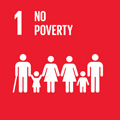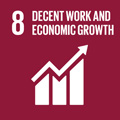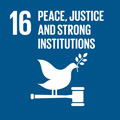- Docente: Asher Daniel Colombo
- Credits: 8
- SSD: SPS/07
- Language: English
- Moduli: Asher Daniel Colombo (Modulo 1) Asher Daniel Colombo (Modulo Gr. 1) Asher Daniel Colombo (Modulo Gr. 2) Asher Daniel Colombo (Modulo D.Ass)
- Teaching Mode: In-person learning (entirely or partially) (Modulo 1); In-person learning (entirely or partially) (Modulo Gr. 1); In-person learning (entirely or partially) (Modulo Gr. 2); In-person learning (entirely or partially) (Modulo D.Ass)
- Campus: Bologna
- Corso: Second cycle degree programme (LM) in International Relations (cod. 6749)
-
from Sep 15, 2025 to Dec 04, 2025
Learning outcomes
At the end of the course, students will be able to have a general overview of international migrations, their main interpretative models, and some related issues; to manage the main concepts for the study of migrations, from the classic economy and the demography ones, to the more recent and promising approaches developed in history and sociology.
Course contents
The social landscape of Europe has been significantly influenced by international migration and the settlement of immigrant minorities. These changes manifest in social, political, demographic, economic, and cultural aspects, prompting new questions: What drives people to migrate? Why do transnational movements endure across time and space? What are the experiences of individuals and groups after migration? Do immigrant minorities and their descendants integrate into the host countries' socio-economic fabric, and to what extent? How can we gauge and evaluate immigrant integration and assimilation in host countries? What are the implications of the emergence and onset of diverse, multiethnic societies in Europe?
The course will cover the major theories and empirical research on immigration and settlement of foreigners from sociology, with consideration of contributions from history, demography, economy, political science, and anthropology as needed. The course focuses on the European case within a broader comparative framework, encompassing contemporary migratory systems dating back to the early 20th century.
Main topics: Do we really live in "The Age of Migration"? - What are the main Theories of international migrations? - How have International migrations systems evolved in postwar Europe? - What are the main immigrations controls ? - Models of Immigration in Europe - Immigrations, 2G and integration/assimilation - Immigrants and Public opinions in Europe (and in the world)
More details will be provided in the firsts lessons of the course.
Readings/Bibliography
Attending students
Attending students will be given a reading list at the beginning of the term. This list will primarily consist of academic journal articles, research papers, and reports.
All the readings covered during lectures are mandatory and are considered part of the syllabus for the final exams. Students are expected to read them in advance and be prepared to discuss them in class.
These readings are essential for completing assignments as well (see "Assessment methods" section for attending students). All readings will be made available online through the university's Virtual Learning Environment (VLE) website.
Non-attending students
(1) - book
Gatrell, Peter. 2019. The Unsettling of Europe: The Great Migration, 1945 to the Present. London: Penguin Books Limited.
(2) - book
Abramitzky, Ran and Leah Boustan. 2022. Streets of Gold. America’s Untold Story of Immigrant Success. New York: Public Affairs.
or:
Deng, Grazia Ting. Chinese Espresso. Contested Race & Convivial Space in Contemporary Italy. Princeton, NJ: Princeton University Press, 2024.
(3) book
Livi Bacci, Massimo. 2012. A Short History of Migration: Polity.
or:
Livi-Bacci, Massimo. 2023. Over Land and Sea. Migration from Antiquity to the Present Day: Polity.
(4) - journal articles
The following resources are available on "Virtuale - Virtual Learning Environment":
All the 4 papers in Reading List 1 (RL1 "Climate Migration: Research and Fiction") or all the papers in Reading list 2 (RL2 "Cultural Assimilation") - All the papers of one of the two
AND
All the 4 papers in Reading list 3 (RL3 "Theories of International Migrations")
(5) journal article
Colombo, Asher and Gianpiero Dalla‐Zuanna. 2019. “Immigration Italian Style, 1977 – 2018.” Population And Development Review. 45:585-615.
Both Attending and non-attending students
For those unfamiliar with sociological concepts and theories, I highly recommend reading:
- Van Tubergen, F., Introduction to Sociology, London, Routledge 2020
- de Swaan, A., Human Societies. An Introduction, Polity Press, 2001
Teaching methods
The course is organized as it follows.
- In the first part, we will hold lectures focusing on theories, current empirical research, and discussions based on the assigned reading materials. Students are expected to complete the readings before class and are encouraged to participate actively in the discussions. As a result of this part of the course, students will select a topic for their Statistical Report on Migration and begin developing the theoretical section of the report.
- In the second part of the course, we will concentrate on preparing the Statistical Report on Migration. Students will need to find reliable sources, gather and analyze data, and write their statistical reports on international migration. Each group will need access to a personal computer equipped with a spreadsheet program (such as Excel or Google Sheets) or a statistical software package (such as SPSS, Stata, or R). These reports will be presented in class, and students will work in small groups.
Assessment methods
Attending students
Students who attend the class are not required to take a final exam. Their final grade will be based on assignments and class participation. The assignments include:
- Reading and discussing the assigned papers (individual assignment) and
- a statistical profile (group assignment).
All details will be provided on the Virtual Learning Environment (VLE) after the start of the course.
Non-attending students
The exam is written and consists in answering to open questions on all the books and papers on the reading list. See "Readings/Bibliography" section, sub-section "Non attending student".
More details will be provided during the course and on VLE (Virtual Learning Environment)
Teaching tools
The course employs four main teaching tools:
1. A reading list
2. A list of websites leading to research institutions and statistical sources, which all participants are expected to familiarize themselves with
3. Spreadsheet and statistical software for data analysis
4. Slides presented during the course, which are made available online on the Virtual Learning Environment (VLE), usually after the second lesson of each week.
Office hours
See the website of Asher Daniel Colombo
SDGs




This teaching activity contributes to the achievement of the Sustainable Development Goals of the UN 2030 Agenda.
